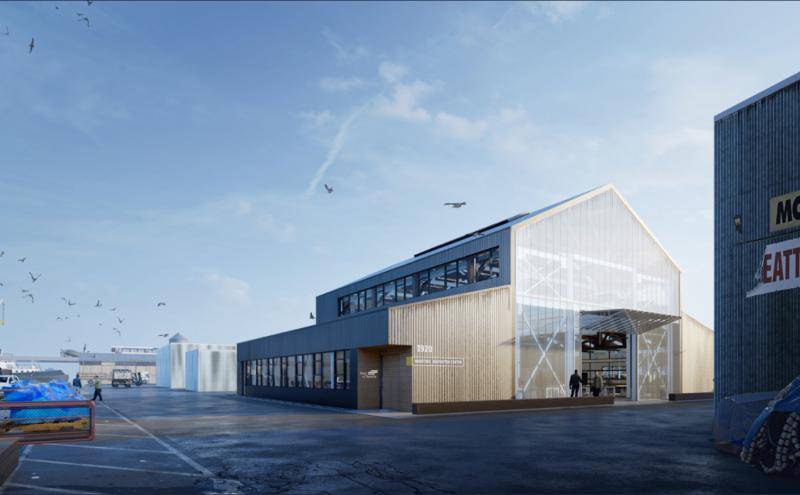
The Port of Seattle has commenced the renovation of the historic Ship Supply Building at Fishermen’s Terminal, aiming to transform it into a modern Maritime Innovation Center (MInC). This new facility will support the maritime industry by bringing together students, businesses, public agencies, and community stakeholders. The port is partnering with Miller Hull for the construction.
“Today’s groundbreaking is a celebration of the Port’s substantial commitment to support innovation as a way to foster the maritime industry’s ability to sustain our region’s blue economy,” said Port of Seattle Commissioner Fred Felleman. “The transformation of the Port’s oldest asset into one that can meet the Living Building Challenge symbolizes the Port’s recognition of the maritime industry’s significance to our region’s history and future.”
“The future of the maritime industry and the ocean economy is innovative, sustainable, and equitable,” said Port of Seattle Commissioner Ryan Calkins. “The Maritime Innovation Center will foster an atmosphere of collaboration and innovation which will ensure that all the sectors of the maritime industry, from commercial fishing to the growing green maritime economy, have not only a home but an anchor in Seattle.”
The port is investing over $100 million in the terminal’s redevelopment, including dock maintenance, facility enhancements, and new wayfinding and art installations. Washington Maritime Blue will be the anchor tenant, promoting sustainable maritime business practices.
The MInC will adhere to the Living Building Challenge (LBC) framework, incorporating features such as net positive energy, salvaged materials, rainwater capture, and on-site photovoltaic arrays. The project will preserve much of the original 1918 building’s structure, integrating sustainability with historic preservation.
A cornerstone of the fishing industry and community in the Pacific Northwest, Fishermen’s Terminal—opened in 1914— is the home of the North Pacific Fleet, the site of the Seattle Fishermen’s Memorial, and a maritime industrial asset.
